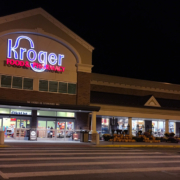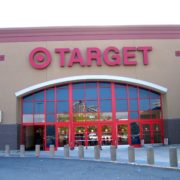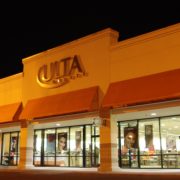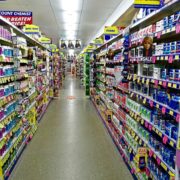Podcast: Understanding Retail Buyers
/in Broker Management, Retail Strategy /by BeckyDon’t miss my guest appearance with Mark Young on the CPG Insiders podcast where we talk about what you should know before meeting with a retail buyer. Click here for the link.
What to do About Kroger’s 90-Day Payment Terms?
/0 Comments/in Retail Strategy /by BeckyKroger recently announced a shift to 90-day payment terms, effective August 1, and many manufacturers are unhappy. What does this mean for you? Here’s my advice:
Target began making the same “request” one year ago. Here is the issue: once the supplier caves-in to Target, or Kroger, then it’s only a matter of time until the manufacturer will be under pressure to do the same for most other accounts, and eventually, your business model will need to adjust to 90 days for almost every retailer nationwide. That’s not a good situation.
I am advising my clients to hang tough. I am requesting a face to face meeting with the powers-to-be, so that I can explain why this does not work for the client’s business-model, and the impact it will have on the brand’s ability to advertise, and to support the retailer’s promotions. In any case, without a personal face to face meeting with the true decision-makers, we will hang tough.
What do you think? Leave a comment below, and here’s a link to the original story from RetailWire.net.
Walmart is focused on expanding its digital brand portfolio
/0 Comments/in Brand Development, Retail Strategy /by BeckyOne of the primary reasons for Walmart’s long-term survival, market leadership and success, and the reason it will continue for years, maybe decades to come, is that unlike Kmart, Sears, J.C. Penney, Toys “R” Us, etc., Walmart makes all the right pivots and adjustments to changing times and consumer purchasing cycles and trends.
Read the whole story from RetailWire here.
What do you think? Post in the comments.
Target-Kroger Merger Not Happening?
/0 Comments/in News & Articles, Retail Strategy /by BeckyTalk of a Kroger – Target merger had bubbled up over the weekend, creating some exciting discussion and speculation. But alas, news organization Reuters reported today there is no truth to the rumors, at least according to their source.
The excitement started when tech magazine Fast Company reported that the two companies were in possible merger talks, which sent shares of both companies up. However, now it looks like this may not be true.
Does a Kroger – Target merger even make sense?
This reported merger between Target and Kroger never made sense to me, as the two companies operate with very different approaches to their assortment and branding strategies. Therefore I am not surprised to hear these reports being denied.
You can read the Reuters article here.
Why some retailers are opening more locations while others continue to close
/0 Comments/in News & Articles, Retail Strategy /by BeckyIn the midst of a seemingly darkening future as many well-known retailers continue to close their doors, there are a number of retailers who are actually expanding this year. Look for more Ulta, Target, Gap, Dick’s, Dollar General and Ross stores to open during 2018, which seems to buck the trend we’ve come to expect in retail.
Some growth despite bad news for others
Why are these retailers able to add locations as so many of their competitors shut their doors? Ulta, more than any retailer that I can think of, was the best at adapting to changing trends in consumer buying behavior, and for that reason, they are enjoying success.
In contrast, retailers such as Sears, Kmart, JC Penney and Toys R Us did not adjust well, and that’s why they are having problems.
To find out more about the strategy of these successful retailers, check out the original post by CNBC and linked by RetailWire, a uniquely engaging forum for the retailing industry.
Celebrity Endorsements – The Secret to CPG Success
/in Brand Development, Retail Strategy /by BeckyCelebrity endorsements can be a big win for your brand, especially when “little known” celebrities take off and become big stars. It’s a tried and true formula that has brought much success to many different brands.
Just a few years ago, one of my clients wanted to secure some celebrity endorsements for their new product, OraWave. We did some research and lined up a few “little known” celebrities to endorse their product. Little did we know that many of these minor, at the time, celebrities would go on to become big stars.
Even Adweek, arguably the most influential publication in the advertising industry, has recognized the power of relevant celebrity endorsements. Click here to see some recent examples of successful partnerships.
Successful celebrity endorsements
Check out Rihanna, Katherine Heigl, Kate Walsh, Traci Bingham, James Denton and Tierra Mari holding their OraWave Pink Ribbon Twin Spin toothbrushes in the photo above. None were yet big stars when this photo was taken, but shortly thereafter they hit the big time and found fame. OraWave reaped the benefits of being associated with these up-and-coming celebrities and they increased their brand awareness dramatically.
There are many examples of successful celebrity endorsements: Neil Patrick Harris for Heineken Light, LeBron James for Nike and Sofia Vergara for Procter & Gamble for starters. Who would be your ideal celebrity to represent your brand?
Get started with your own celebrity endorsement
If you’ve got a product you think would benefit from a celebrity endorsement, and a budget for it, let’s talk. I have years of experience in developing celebrity brands and managing both talent and products to bring success and equity to new CPG brands.
Click here to send me an email about your brand and goals for celebrity endorsements. If I believe I can help, I will reach out to you and together we can implement a plan to help you increase your brand awareness with a well-suited celebrity endorsement.
Consumer data and privacy concerns
/in Retail Strategy, Uncategorized /by BeckyAre consumers getting more comfortable with exchanging personal information for more individualized online shopping experiences? RetailWire, a leading online discussion forum for the retail industry, recently asked this consumer data question, and I, as a RetailWire BrainTrust member, gave it some thought.
Changes in consumer data collection
During my 40+ years in the retail industry, I’ve seen much evolution in consumers’ shopping experiences. One of the biggest changes has been the incredible impact made by the internet and online shopping. It’s become very easy to collect data on consumers through online searching and shopping. With this data, marketers can make informed decisions that benefit our brands and create personal experiences for our customers. But what do consumers think about the collection and use of consumer data?
Are consumers comfortable sharing personal data online?
I am confident that most self-actualized and stable-minded consumers have adapted to the brave new world of data sharing with retailers. I think resistance today is more two-fold:
- I’m in a hurry, and I just want to make this purchase quickly. And I don’t have time to be bothered with sharing my personal information. I’m buying groceries, not a new home or car.
- I don’t want to give you all of my personal data because I don’t want your junk mail. And I don’t want you selling out my personal data to other firms that will send me mail I do not want.
If retailers and their data partners can give assurance to consumers about how the data will be used, and not used, I think there will be less resistance. What do you think? Leave a comment below!
For more insights on this topic from other RetailWire BrainTrust members, be sure to check out the original post, “Are data sharing concerns still holding back true personalization?” If you want to stay on top of what’s going on in the retail world, and you’re not regularly reading RetailWire, you should be. Click here to sign up for their informative newsletter.
Back to Basics – What Every New CPG Brand Needs to Know
/in Brand Development, Retail Strategy /by BeckyPeople always ask me what they need to know before they launch a new CPG brand in the retail space. Over the years I’ve learned a few lessons about what’s necessary for success in this space. Here are some of the basics every new CPG brands need to cover before launching into the retail marketplace.
Have funding in place
For a successful launch in the CPG marketplace, you’ll need to have funding in place and easily accessible to cover costs like:
- Retail fees and cost to do business with retailers.
- Basic marketing, promotion and advertising.
- Manufacturing, inventory, warehousing and distribution.
- Cash flow.
Avoid disasters with planning
Without strategy and solid planning, it’s easy to get off kilter. Here are some of the most common reasons for disaster for your CPG brand in the first year:
- Lack of adequate and proper funding.
- Presenting the retail market prematurely.
- Lack of business/marketing plan.
- Lack of marketing energy (funding/plans/execution) after product makes it to the shelves.
- Inability to ship on time or out of stocks.
- Entering unfavorable deals and terms with retailers.
- Pre-mature hiring of reps and brokers.
- Not having finished goods and live samples.
- Lack of completed sales presentations and proper marketing materials.
- Inexperience working with chain drug, mass, and supermarket retailers.
- Improperly managing reps and brokers and their activities.
Cover the marketing basics
Here’s what you need to have in place before hiring and deploying reps and brokers and going to market at retail:
- Finalized package design with exactly the right information and graphics.
- All display vehicles in place with live samples of open stock and individual samples and ready to ship.
- High and low-resolution images in place for all products, all sizes, and all displays.
- Complete PowerPoint Presentation that includes every retailer interest and discussion point.
- Completely finished goods ready to ship now.
- Plan of action (on paper and ready to explain) for ramping up demand for retail customers.
- Sales materials ready for use. (Sell sheets, pricing, complete specifications, images, etc.)
- Web site up and running – fully functional for consumers, retailers, and reps.
Complete “office” staffing
Before launching, it’s very important to have your office staff (or systems) in place, and ready to do business 24/7.
- Ready to work with brokers
- Customer service for retailers
- Customer service for consumers
- Warehouse, shipping, transportation, information systems, etc.
Make plans and preparation for your brokers
Make sure you give your brokers the proper tools so that they are effectively prepared to do their job.
- Broker territories completely planned and laid out. (Do NOT let it simply evolve broker by broker!)
- Broker contacts ready to use.
- POG/placement suggestions/deletions/POA with information and illustrations or photos.
- Complete broker selling kits ready to dispense for use! (Including all sales materials, samples, sell sheets, fact sheets, company data and instructions to do business, etc.)
- Any commercial, ad, or brand promotion needs to be ready to “show and tell.” Have at the ready, and easily accessible, any links, print advertising, viral, video, etc. (You might get only one chance to show your “energy” and this is of paramount interest to buyers.)
- Market research data with visuals, metrics and stats to build your case!
- Consumer research and testimonies (visual and ready to explain.)
- Category information data and visuals. Be able to build your case for category expansion.
- All “how to do business” written and printed details need to be clearly outlined for reps. (Terms, shipping points, shipping information, returns, retail ad budget parameters, and company contact information, commission’s administration, etc.)
Leverage CPG brand trade shows
Trade shows are a great way to get your product in front of retail buyers and executives. Sign up on time and be prepared for each show. Below are the big three, but there may be others that are appropriate for your specific product. For more details about the NACDS Total Store Expo, check out this blog post.
Plan and execute trade advertising
Be sure to have a plan and budget for important trade advertising:
- Chain Drug review
- MMR
- Drug Store News
- Other
7 Common CPG Missteps to Avoid with a New Product
/in Broker Management, Retail Strategy /by BeckyNavigating the CPG retail world is complex and intricate, and bringing a new product to market can be difficult, even for seasoned professionals. It’s important to look to an expert before you take the jump into the retail market. Here are 7 common CPG missteps I see people make that can sink their product before it even has a chance for success.
7 common CPG missteps
- Mismanagement of brokers. Failing to keep a highly experienced, razor-sharp eye on everything brokers do from the minute they receive samples is a common misstep. Also, it is often “fatal” to send a broker alone to show your product to a buyer without adequate preparation, detail, and without a skilled master broker or highly seasoned sales executive to represent the brand in a comprehensive way.
- Incomplete retail presentation. You’ve no doubt heard the expression, “you never get a second chance to make a first impression.” This is especially true in retail. An incomplete or disjointed presentation turns off buyers who will reject your product and move on to the next.
- Bad package design. While your product is very important, the package design is the first thing consumers and retail buyers will see. If it’s not optimized for a retail store shelf environment, easy consumer comprehension and appeal to the target audience, it won’t make it to the shelves, or stay long if it does.
- Wasting your first meeting. Showing up unprepared to a meeting with a retail buyer at a trade show or in his or her office is the best way to not get a second meeting.
- Not understanding the true costs. Getting products on retail shelves can be an expensive endeavor. It’s a big mistake to not have a realistic plan and budget before you start the process.
- Being pressed into an unfavorable deal. A bad deal is a bad deal, even if it’s from a “good” retailer or broker. Once you’ve entered into an agreement, it’s too late to negotiate better terms.
- Hitting the shelves without an action plan. Unfortunately, even the best products don’t really sell themselves, and getting them on retail shelves is just the first step. Without a plan to drive sufficient velocity and awareness, your product is likely to be delisted after just a few months.
Avoiding these 7 common CPG missteps can help smooth the path to retail success. I share lots of ideas and tips on my blog, but if you would like to work with me on a consulting basis, please contact me at david@biernbaum.com.
“Driving consumer products to maximum success through increased market-share and continuous growth, while building value and equity for my clients’ brands, is my passion and expertise.” — David Biernbaum
Latest Blog Posts
Archive
- August 2024
- July 2024
- June 2024
- May 2024
- April 2024
- March 2024
- February 2024
- January 2024
- November 2023
- October 2023
- May 2023
- April 2023
- March 2023
- January 2023
- February 2021
- December 2020
- November 2020
- April 2019
- September 2018
- August 2018
- April 2018
- March 2018
- February 2018
- January 2018
- November 2017
- October 2017
- September 2017
- May 2016
- September 2015
- March 2013
- February 2013
- July 2012










